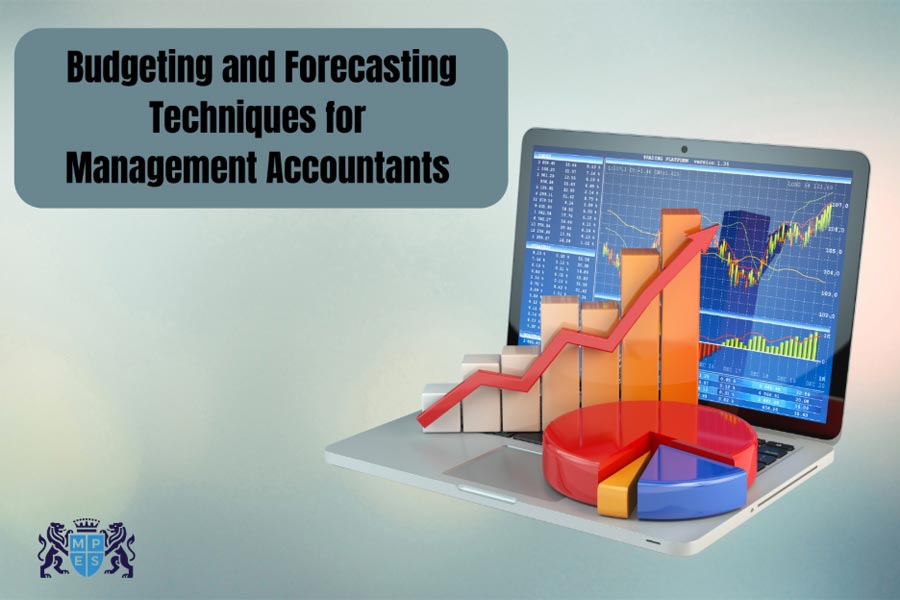Have you ever wondered how companies plan their spending and predict future profits with confidence? Many aspiring finance professionals begin this journey through ACCA Foundations level as it builds strong skills for real-world financial planning. Once you understand What is Management Accounting and its purpose, budgeting and forecasting become clearer. These skills help companies make smart decisions, stay ready for changes, and use their resources wisely.
In this blog, let us explore practical techniques that management accountants use to shape financial success and keep organisations on track.
Table of Contents
- Smart Budgeting Techniques Every Accountant Should Know
- Forecasting Techniques for Modern Finance Teams
- Conclusion
Smart Budgeting Techniques Every Accountant Should Know
Below are the key budgeting techniques that help accountants plan spending, control costs, and support confident business decisions:
Zero-Based Budgeting
Every period, Zero-Based Budgeting begins anew. All expenses must be justified and authorised instead of being duplicated from the prior year. This approach eliminates waste, enhances self-control, and encourages spending only on things that are really important.
Activity-Based Budgeting
Activity-Based Budgeting connects expenditures to important business operations. It evaluates jobs like marketing, production, and support and allocates expenses according to the amount of work required. This approach helps organisations understand what drives their spending and creates appropriate budgets.
Static Budgeting
Static budgeting establishes a single, annual plan. When market circumstances are steady and predictable, it performs well. Managers assess performance and keep financial control by comparing actual outcomes to this plan.
Incremental Budgeting
Gradual Budgeting makes minor adjustments to last year’s data. The technique works well in everyday settings since it is quick and easy to implement. Regular checks are required to avoid carrying forward needless expenses, though.
Flexible Budgeting
Spending is adjusted by flexible budgeting according to activity levels. When demand rises, resources are increased; when activity slows, resources are decreased. This approach facilitates cost management and helps organisations adapt to changes in the market.
Break-Even Analysis
The point at which total expenses and total revenue are equal is determined by break-even analysis. It assists management in understanding how many units they need to sell in order to prevent losses and directs pricing decisions. This approach lowers financial risk and promotes planning.
Capital Budgeting
Long-term investment decisions can be evaluated with the aid of capital budgeting. Managers evaluate project possibilities by examining recovery time and anticipated returns. This approach promotes long-term company growth and wise investment decisions.
Forecasting Techniques for Modern Finance Teams
Below are the essential forecasting techniques that help finance teams predict future performance and plan with clarity:
Rolling Forecasts
Throughout the year, Rolling Forecasts revise financial forecasts. Instead of waiting for the next budget cycle, managers make adjustments to data as circumstances change. This approach promotes improved decision-making and keeps plans realistic.
Scenario Planning
Organisations are prepared for a variety of potential scenarios through scenario planning. It takes into account the best, worst, and anticipated circumstances. Businesses may react swiftly to shocks, whether they are opportunities or hazards, by evaluating a variety of options.
Cash Flow Forecasting
Flow of Cash Forecasting projects the inflow and outflow of funds over time. It guarantees that the company can pay its bills, make prudent investments, and maintain its financial stability. This approach promotes efficient operations and avoids cash constraints.
Time Series Forecasting
Sequences of Time Forecasting makes predictions about future patterns by analysing historical performance. Seasons and sales cycles are examples of patterns that are used to set expectations. Planning based on dependable previous behaviour is aided by this approach.
Regression Forecasting
Regression forecasting looks at how variables relate to one another. It investigates the effects of variables like price adjustments and advertising levels on sales. By connecting cause and effect in actual business scenarios, this approach increases accuracy.
Sensitivity Analysis
Sensitivity analysis examines how outcomes vary when important presumptions change. It draws attention to the elements that most affect performance. This technique aids managers in comprehending risk and fortifying their planning choices.
Forecast Versus Actual Review
Forecast versus Actual Review contrasts actual performance with forecasted outcomes. Managers find gaps, comprehend the causes, and enhance projections for the future. This approach promotes continuous learning and increases prediction accuracy.
Conclusion
Mastering budgeting and forecasting techniques helps management accountants guide organisations with confidence. These tools support smart spending and improve financial planning across departments. Whether a business is growing fast or facing change, these methods give structure and clarity to every decision. To build these skills and understand them in real business situations, consider learning with MPES Learning and strengthen your journey in management accounting.











